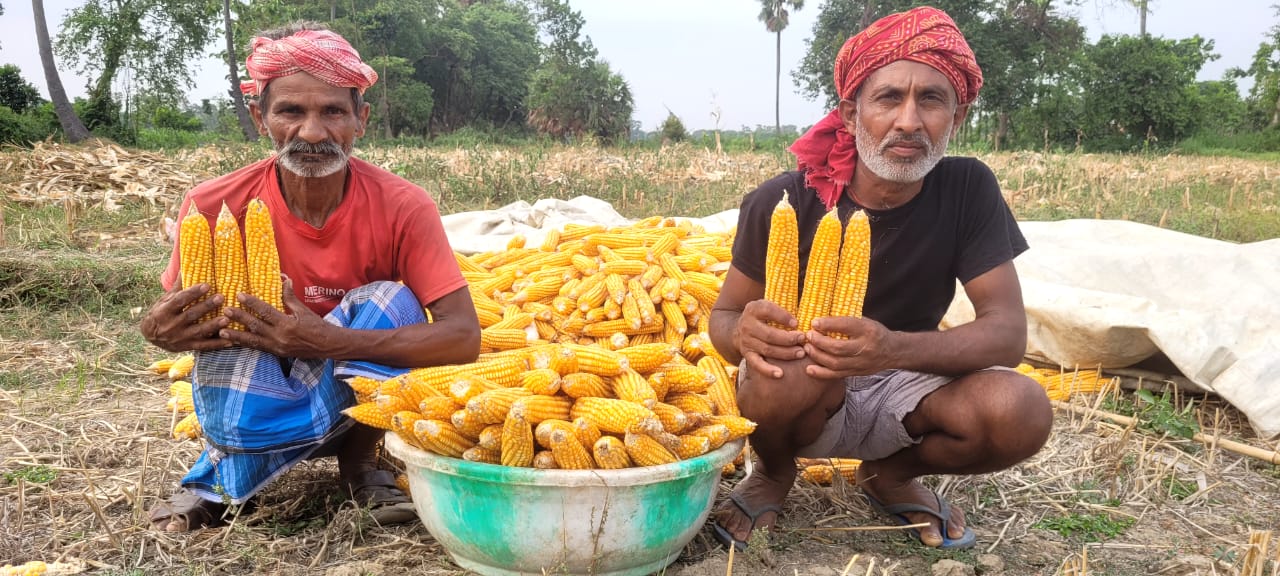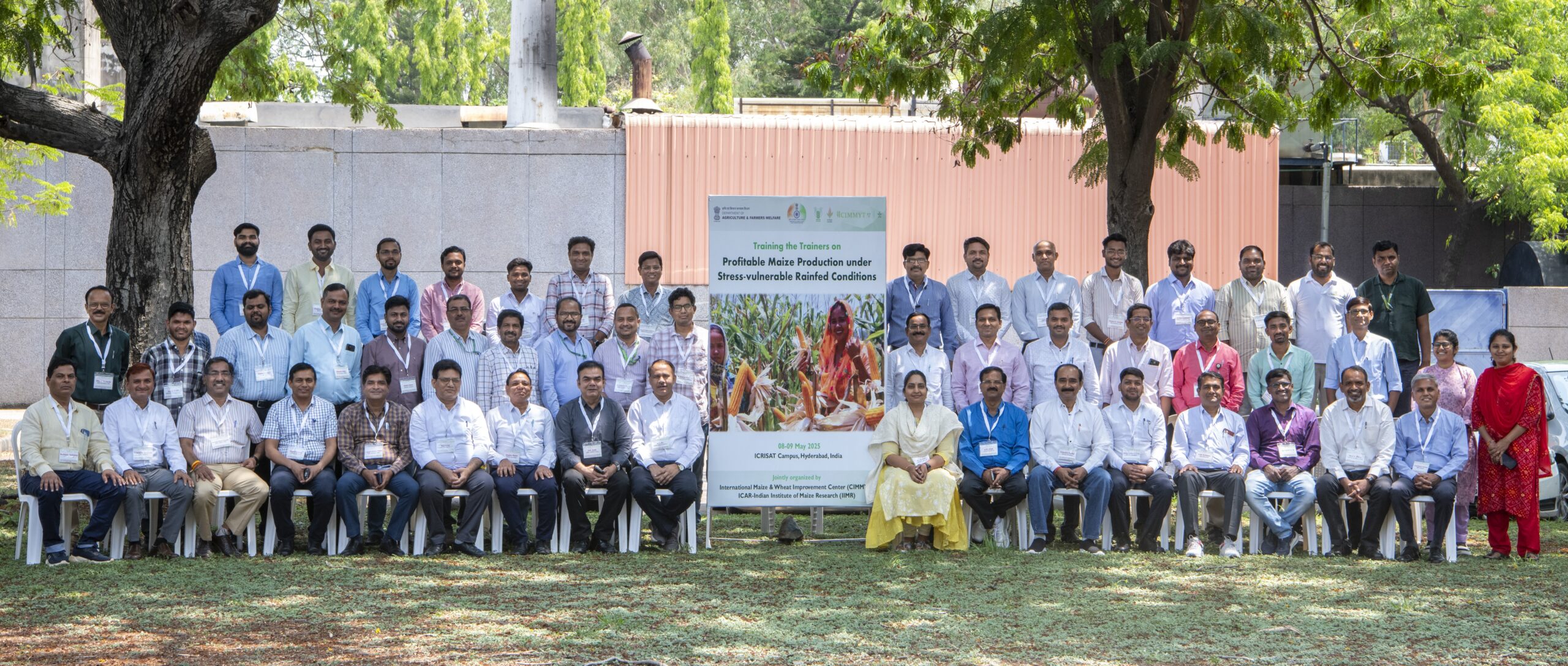Take it to the Farmer: partners trained on positioning & scaling climate-adaptive maize in rainfed marginal ecologies – CIMMYT

Report on Climate-Adaptive Maize Cultivation in Rainfed Agroecologies of India
Introduction
India leads globally in rainfed agriculture, with these areas producing nearly 40% of the country’s food grains and supporting two-thirds of the livestock population. Rainfed farming plays a crucial role in ensuring food security and livelihoods, aligning with Sustainable Development Goal (SDG) 2: Zero Hunger. However, the sector faces significant challenges from climate variability and extreme weather events, particularly during the summer rainy season.
Challenges in Rainfed Agriculture and Climate Impact
- Rainfed systems are highly vulnerable to abiotic stresses such as drought, heat, and waterlogging during crop growth stages.
- Climate change has increased the frequency and uncertainty of weather extremes, threatening farm productivity and the livelihoods of millions of smallholder maize farmers in the Asian tropics.
- India is identified as a climate change hotspot, posing risks to rainfed crop productivity, including maize.
These challenges highlight the need to address SDG 13: Climate Action through resilient agricultural practices.
Maize Production in India’s Rainfed Systems
- Maize is primarily cultivated as a rainfed crop during the Kharif (summer rainy) season, accounting for about 70% of the maize area.
- Recent growth in maize production is mainly due to high-input cultivation in favorable environments (winter and spring seasons).
- Stress-prone rainfed systems are often unprofitable and neglected by multinational seed companies, limiting access to improved seed varieties for smallholder farmers.
- Farmers typically use low-yielding open-pollinated varieties (OPVs) or stress-vulnerable hybrids, resulting in low productivity and high risk.
This situation underlines the importance of sustainable agricultural development as per SDG 2 and SDG 12: Responsible Consumption and Production.
Need for Climate-Adaptive Maize Hybrids
Yield stability and resilience are critical in climate-vulnerable agroecologies to minimize risks from weather extremes. Deploying elite, high-yielding, climate-adaptive maize (HyCAM) hybrids can significantly improve productivity and livelihoods of smallholder farmers.
This initiative supports SDG 1: No Poverty by enhancing income security and SDG 5: Gender Equality by benefiting both women and men farmers.
Collaborative Efforts and Development of HyCAM Hybrids
- CIMMYT, in partnership with public sector institutions such as the ICAR-Indian Institute of Maize Research (IIMR) and state agricultural universities (SAUs), has developed several HyCAM hybrids.
- Despite official release, many hybrids have not reached smallholder farmers in marginal rainfed ecologies.
Climate-Adaptive Maize for Stress-Vulnerable Agroecologies (CAMSA) Project
The CAMSA project, supported by the Department of Agriculture & Farmers Welfare (DA&FW), Ministry of Agriculture, Government of India, aims to scale the adoption of HyCAM hybrids with a focus on:
- Awareness about climate-adaptive maize technologies
- Availability of quality HyCAM hybrid seeds
- Access to affordable seeds and low-cost agronomic practices suitable for rainfed conditions
The project targets eight clusters of districts across eight states, including Jammu & Kashmir, Karnataka, Madhya Pradesh, Maharashtra, Gujarat, Rajasthan, and Uttar Pradesh, focusing on areas with average productivity ≤2.5 tons/ha.
This initiative advances SDG 2, SDG 13, and SDG 15: Life on Land by promoting sustainable and resilient agricultural systems.
Capacity Building through Training Programs
A two-day Training of Trainers (ToT) workshop titled Profitable Maize Production under Rainfed Conditions and Hybrid Seed Production was held on May 8–9, 2025, at CIMMYT Hyderabad. Key features included:
- Participation of collaborating center leads and teams
- Skill development for maize production in stress-vulnerable rainfed conditions
- Knowledge sharing and progress updates on CAMSA activities such as on-farm demonstrations, farmer trainings, and hybrid seed production
The workshop fostered collaboration and innovation to overcome challenges in reaching marginal and underserved areas with HyCAM seeds.
Implementation and Outreach
Following the ToT workshop, trained personnel have initiated a series of Whole Family Training sessions within targeted districts to promote adoption of HyCAM hybrids and sustainable practices.
These efforts contribute to SDG 4: Quality Education by empowering farming communities with knowledge and skills, and SDG 10: Reduced Inequalities by focusing on marginalized farmers.
Visual Documentation



Conclusion
The CAMSA project exemplifies a strategic approach to enhancing the resilience and productivity of rainfed maize farming in India, directly contributing to multiple Sustainable Development Goals. By facilitating access to climate-adaptive maize hybrids and empowering farmers through training and knowledge dissemination, the initiative supports sustainable agriculture, poverty reduction, climate action, and inclusive growth for vulnerable smallholder communities.
1. Sustainable Development Goals (SDGs) Addressed or Connected
- SDG 2: Zero Hunger
- The article focuses on improving food security through enhancing productivity in rainfed agriculture, particularly maize farming in India.
- SDG 13: Climate Action
- Addressing climate change risks and promoting climate-adaptive maize hybrids to build resilience in stress-vulnerable agroecologies.
- SDG 1: No Poverty
- Improving livelihoods of smallholder farmers by increasing productivity and reducing risks associated with rainfed farming.
- SDG 15: Life on Land
- Promoting sustainable agriculture practices and resilience in agroecologies vulnerable to abiotic stresses.
2. Specific Targets Under the Identified SDGs
- SDG 2: Zero Hunger
- Target 2.3: By 2030, double the agricultural productivity and incomes of small-scale food producers, including through secure and equal access to land, technology, and markets.
- Target 2.4: Ensure sustainable food production systems and implement resilient agricultural practices that increase productivity and production.
- SDG 13: Climate Action
- Target 13.1: Strengthen resilience and adaptive capacity to climate-related hazards and natural disasters in all countries.
- Target 13.2: Integrate climate change measures into national policies, strategies, and planning.
- SDG 1: No Poverty
- Target 1.2: Reduce at least by half the proportion of men, women, and children living in poverty in all its dimensions according to national definitions.
- SDG 15: Life on Land
- Target 15.3: Combat desertification, restore degraded land and soil, including land affected by desertification, drought, and floods.
3. Indicators Mentioned or Implied to Measure Progress
- Crop Productivity Indicators
- Average maize productivity in rainfed areas (e.g., ≤2.5 tons/ha as baseline in selected districts).
- Yield stability and resilience of maize crops under stress-vulnerable agroecologies.
- Adoption and Access Indicators
- Availability and access to climate-adaptive maize hybrid seeds (HyCAM) among smallholder farmers.
- Number of farmers trained through programs such as Training of Trainers (ToT) and Whole Family Trainings.
- Climate Resilience Indicators
- Reduction in crop losses due to abiotic stresses such as drought, heat, and waterlogging.
- Frequency and impact of weather extremes on maize production in targeted agroecologies.
- Livelihood Improvement Indicators
- Increase in income levels of smallholder maize farmers in rainfed areas.
- Reduction in risk exposure and improved profitability of maize farming under rainfed conditions.
4. Table: SDGs, Targets and Indicators
| SDGs | Targets | Indicators |
|---|---|---|
| SDG 2: Zero Hunger |
|
|
| SDG 13: Climate Action |
|
|
| SDG 1: No Poverty |
|
|
| SDG 15: Life on Land |
|
|
Source: cimmyt.org








